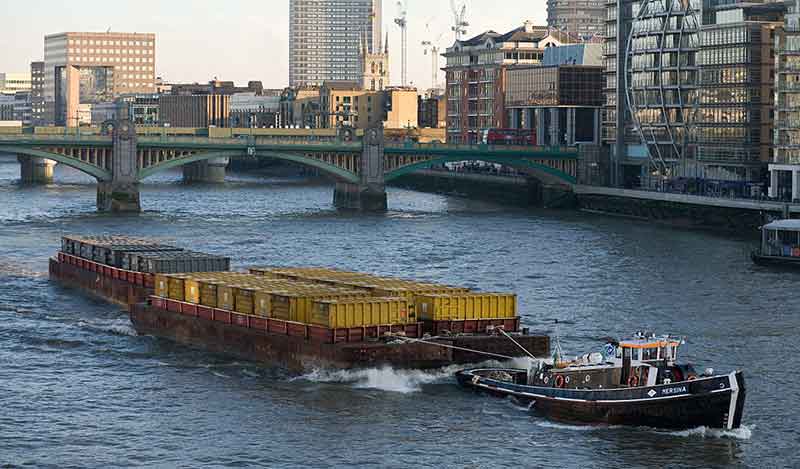A barge is a flat-bottomed, non-self-propelled vessel primarily used for transporting goods via inland waterways such as rivers and canals. Because it lacks an engine, a barge must be towed or pushed by a tugboat or pusher vessel.
Shipping companies often use barges for short-haul or feeder services, especially in areas where large ocean-going vessels struggle to operate efficiently.
Some barges also feature limited propulsion systems and are known as motorized barges. These systems enable short-distance independent movement.

Flat-bottomed design for shallow waters
- High cargo capacity
- Simple equipment and shallow draft
- Modular design to accommodate various cargo types
These characteristics make barges ideal for navigating narrow or shallow waterways and transferring goods from larger ships to inland destinations.
1. Efficient inland cargo transport
Barges are vital to inland waterway logistics. It enables the cost-effective movement of bulk goods, containers, and heavy equipment between ports or industrial zones along rivers and canals.
2. Support for port operations
In port environments, barges assist in activities such as:
- Ship cleaning and repair
- Restocking supplies
- Moving parts and tools between vessels
Their maneuverability and size allow them to operate in tight port spaces where larger vessels cannot.
3. Emergency response and maritime safety
Barges play a role in emergency rescue operations. In the event of maritime accidents, oil spills, or onboard fires, barges can be quickly deployed for evacuation, rescue, or containment.
4. Marine engineering support
Marine engineers use barges to transport heavy materials, equipment, and subsea tools during offshore construction projects. These include:
- Laying undersea pipelines
- Constructing offshore wind farms or oil platforms
- Supporting dredging and port development projects




